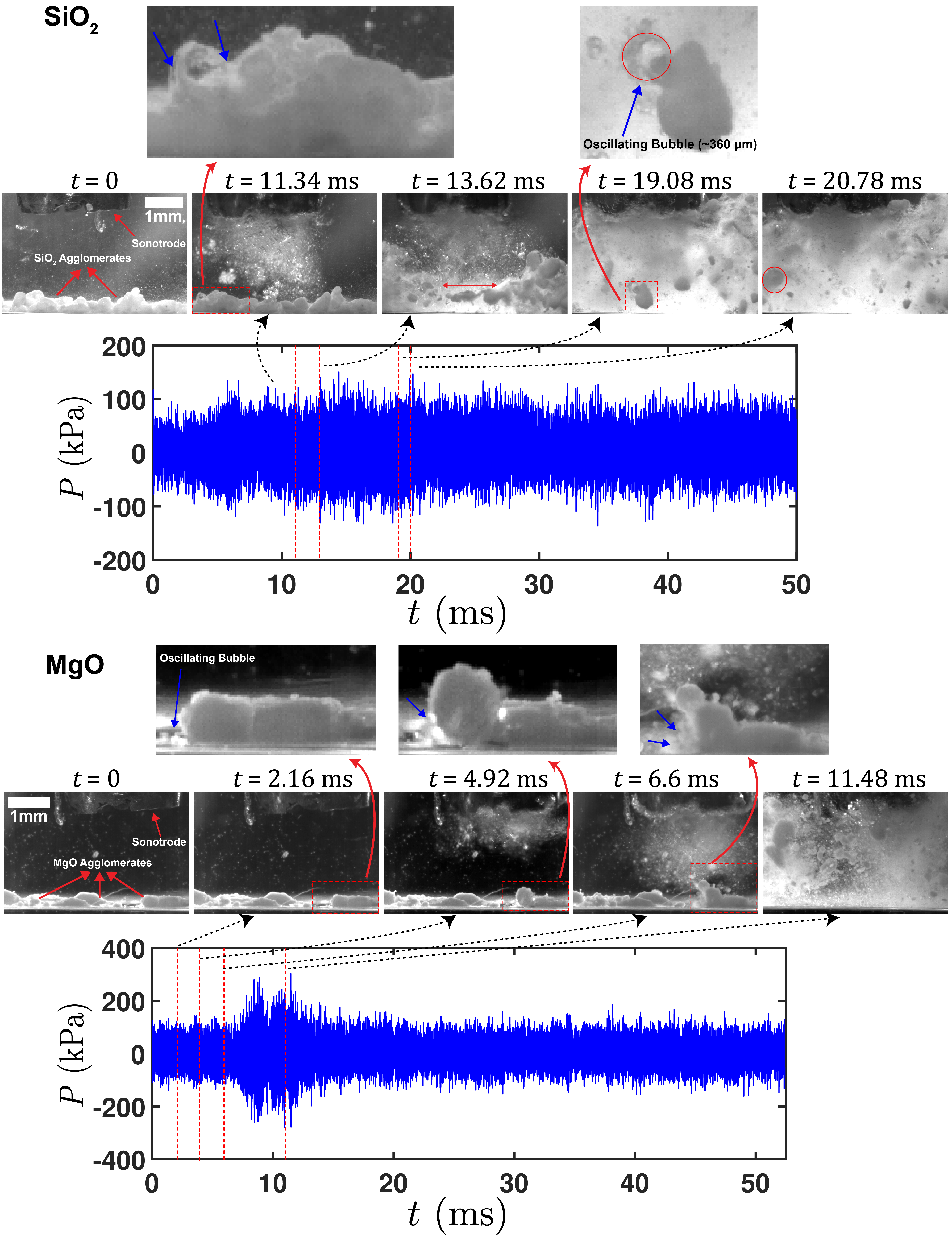Ultrasonic De-agglomeration and Dispersion

Ultrasonic de-agglomeration and dispersion of oxides and other secondary solid phases is important for a number of applications ranging from pharmaceuticals and food industry to composites and metallurgy. In particular, in liquid metal, this is one of the ways to produce metal-matrix composites reinforced with micron- and nano-sized particles.
Our group found that de-agglomeration initially occurs by a combination of chaotic bubble oscillations and the sono-capillary effect followed by strong shock waves (range: 1-5 MPa) that further de-clogs and fragment particles; and acoustic streaming (range: 0.1-0.3 m/s) that promotes particles/fragments dispersion. Smaller floating agglomerates, in the range of 300 –600 μm, are captured and separated into individual particles by the travelling “bubble drones”.
The generated RMS pressure in the range of 30–50 kPa (above atmospheric) with the maximum pressure surges in the range of 300 kPa were found to be sufficient to induce de-agglomeration.
